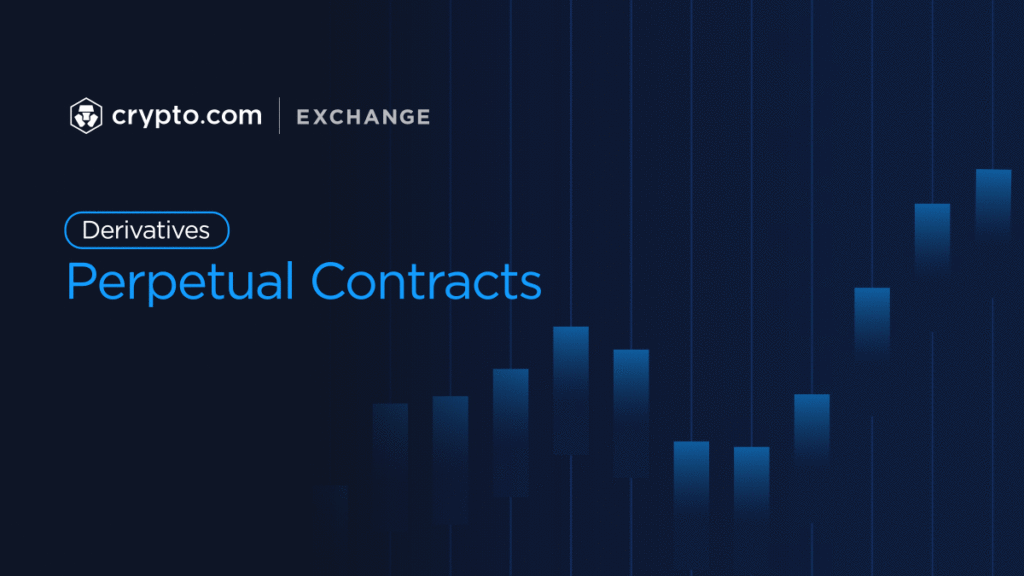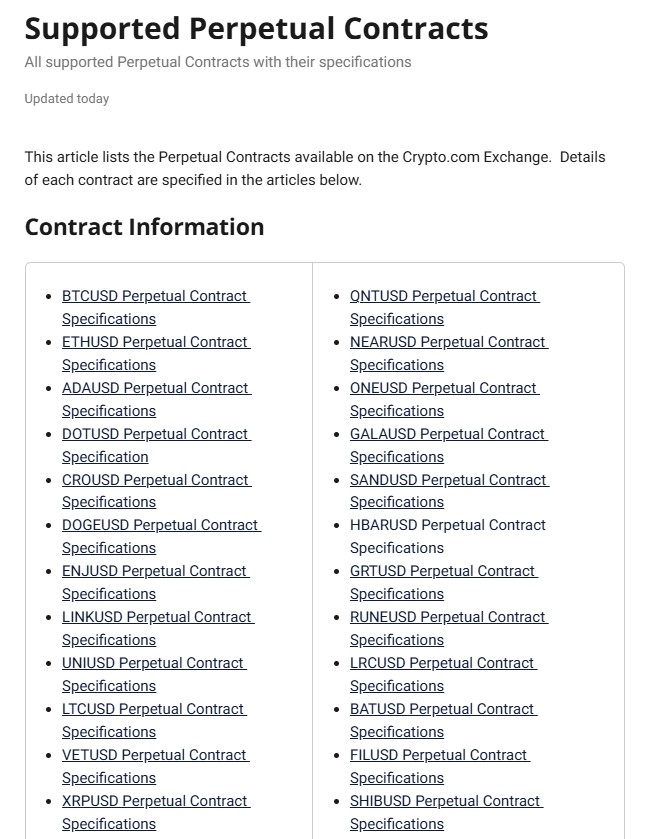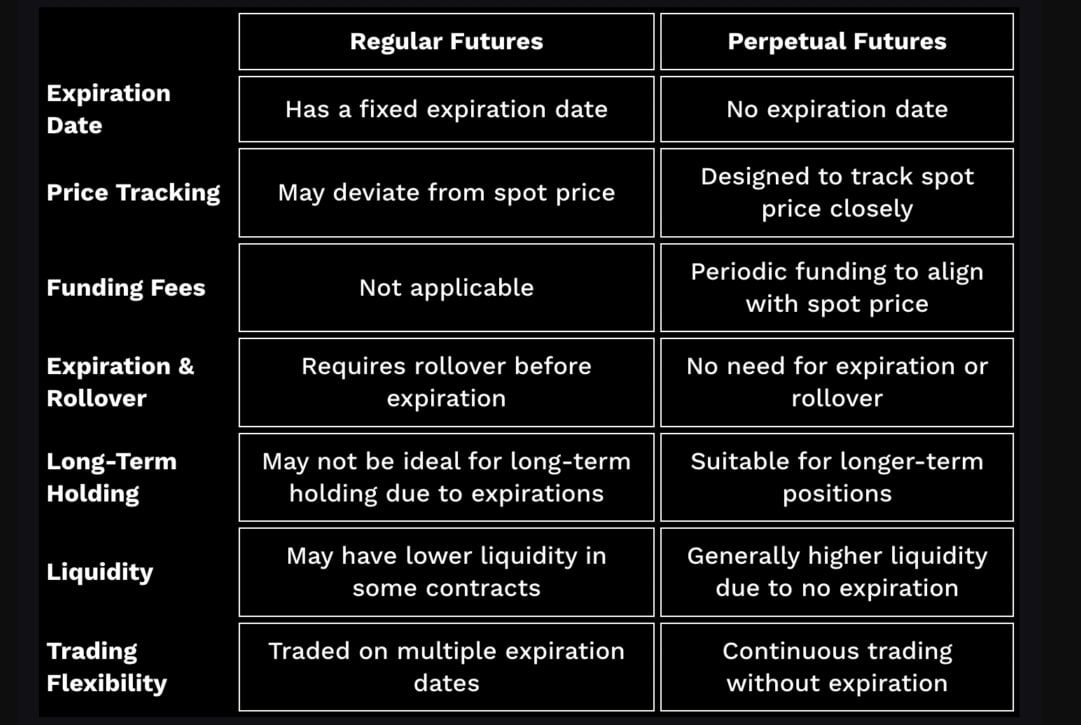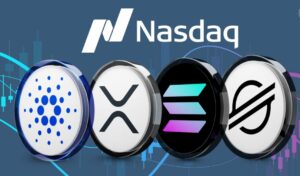Understanding liquidation and risk management is crucial for traders using Crypto.com Perpetual, as it helps prevent unexpected losses, optimize leverage strategies, and maintain long-term profitability in volatile cryptocurrency markets.
Perpetual contracts have become an essential tool for traders seeking high-leverage opportunities in the cryptocurrency market. Among the various platforms offering these derivatives, Crypto.com Perpetual stands out for its seamless trading experience, deep liquidity, and competitive leverage. This comprehensive guide delves into the key aspects of Crypto.com Perpetual, including its product specifications, margin requirements, leverage options, and trading strategies. Whether you are a beginner or an experienced trader, this article will provide valuable insights to optimize your trading performance.
What is Crypto.com Perpetual?
Crypto.com Perpetual refers to a type of derivative contract available on the Crypto.com platform that allows traders to speculate on the price of cryptocurrencies without an expiration date. Unlike traditional futures, perpetual futures enable traders to hold positions indefinitely, as long as they maintain sufficient margin.
These contracts are settled in stablecoins such as USD or USDC, providing a stable medium for profit calculation and risk management. With high leverage, traders can amplify their gains, but they must also be mindful of liquidation risks.

Key Features of Crypto.com Perpetual
Crypto.com Perpetual offers a range of advanced trading features designed to enhance user experience, improve liquidity, and provide flexible leverage options. Understanding these key features will help traders make informed decisions and optimize their trading strategies in the highly dynamic cryptocurrency market.
No Expiry Date
Unlike traditional futures contracts, crypto perpetual contracts do not have a fixed settlement date. This allows traders to hold positions for as long as they want, provided they maintain the required margin.
Smart Cross Margin System
Crypto.com Perpetual employs a smart cross margin system, meaning that all assets in a trader’s account can be used to cover margin requirements. This reduces the risk of liquidation and enhances capital efficiency.
High Leverage Trading
Traders can access high leverage, which allows them to open larger positions with a smaller capital investment. However, leverage can also amplify losses, making risk management crucial.
Competitive Trading Fees
Crypto.com charges a 0.1% convenience fee on both opening and closing positions. Additionally, funding rates and other fees apply based on market conditions.
Advanced Risk Management Tools
The platform provides multiple risk management tools, including liquidation price calculators, fair impact size limits, and trading bandwidth restrictions to protect traders from extreme market fluctuations.
How to Trade on Crypto.com Perpetual
Mastering Crypto.com Perpetual trading requires a clear understanding of the platform’s features, order execution, and risk management strategies. Whether you’re a beginner or an experienced trader, following a structured approach will help you navigate perpetual contracts efficiently while maximizing potential profits. Below is a step-by-step guide on how to trade on Crypto.com Perpetual, from selecting a token pair to managing open positions effectively.
Step 1: Choosing a Trading Pair
To begin trading crypto perpetual, select your preferred trading pair, such as DOTUSD-PERP or BTCUSD-PERP. Each contract represents a specific cryptocurrency against the USD index.
Step 2: Selecting Leverage
Crypto.com Perpetual allows traders to adjust their leverage levels based on their risk tolerance. While high leverage offers greater profit potential, it also increases the risk of liquidation.
Step 3: Placing a Trade
Once leverage is selected, traders must input their desired position size and execute a buy (long) or sell (short) order. The order is then processed and displayed in the positions section.
Step 4: Managing the Trade
Traders should monitor their positions, use stop-loss orders, and track margin requirements to avoid liquidation. Funding fees may also apply for holding positions over extended periods.
Step 5: Closing the Trade
To close a position, traders can either manually sell their contracts or wait until margin conditions force liquidation. Profits or losses are settled in the stablecoin chosen for collateral.

Understanding Liquidation and Risk Management
What is Liquidation in Perpetual Trading?
Liquidation occurs when a trader’s margin balance falls below the maintenance margin required to keep a position open. When this happens, Crypto.com automatically closes the position to prevent further losses.
How is the Liquidation Price Calculated?
The liquidation engine, powered by Fulcrom, calculates the liquidation price based on leverage, margin balance, and market conditions.
Tips for Risk Management in Crypto Perpetual Trading
- Use Stop-Loss Orders: Prevent excessive losses by setting predefined exit points.
- Manage Leverage Wisely: Avoid using maximum leverage unless you fully understand the risks.
- Monitor Funding Rates: Costs can add up if positions are held for long periods.
- Diversify Positions: Avoid overexposure to a single asset to mitigate risk.
Differences Between Perpetual Futures and Regular Futures
Crypto.com perpetual futures and regular futures (standard futures) contracts share similarities in that they both allow traders to speculate on the price of an asset without actually owning it. However, there are key differences that make perpetual futures unique, especially for traders seeking high-leverage opportunities.
-
No Expiry Date: Unlike standard futures, which have a set expiration date requiring settlement, perpetual futures do not expire. This allows traders to hold positions indefinitely, provided they maintain sufficient margin to avoid liquidation.
-
Funding Mechanism: Perpetual futures use a funding rate mechanism to ensure the contract price remains close to the underlying asset’s spot price. This means traders may pay or receive periodic funding payments depending on market conditions. Standard futures, on the other hand, rely on physical or cash settlement at expiry.
-
Leverage and Margin Requirements: Perpetual futures typically offer higher leverage than standard futures, allowing traders to control larger positions with smaller capital. However, this also increases the risk of liquidation. Standardfutures exchanges often have stricter margin requirements and lower leverage options.
-
Market Structure and Liquidity: Perpetual futures contracts tend to have higher liquidity due to continuous trading and the absence of expiry. Standard futures markets may experience liquidity fluctuations as contracts approach expiration.
-
Trading Strategies: Perpetual futures allow for more flexible trading strategies, including hedging and speculation, without the need to roll over contracts. Standard futures require traders to manage contract expirations and rollovers to maintain positions.
Understanding these differences is crucial for traders looking to engage in perpetual trading on platforms like Crypto.com Perpetual, as the unique mechanics of perpetual futures require different risk management and trading approaches.

Common Challenges in Perpetual Trading
Perpetual trading offers significant opportunities for traders looking to maximize their profits through leverage, but it also comes with inherent risks. Understanding these challenges is essential for anyone engaging in Crypto.com Perpetual trading to manage risk effectively and avoid unnecessary losses. Below are some of the most common challenges traders face when dealing with perpetual futures contracts.
Market Volatility
Cryptocurrency markets are known for their extreme price fluctuations, making volatility one of the most significant challenges in perpetual crypto trading. Unlike traditional financial markets, which tend to have more predictable price movements, digital assets can experience rapid price swings within minutes or even seconds.
- Sudden price spikes or crashes can lead to unexpected liquidations, particularly for traders using high leverage.
- Market manipulation, such as whale movements and flash crashes, can trigger stop losses and forced liquidations.
- Even well-planned strategies can be disrupted by external factors such as regulatory news, macroeconomic events, or major hacks in the crypto industry.
To manage volatility risks, traders should employ stop-loss orders, adjust leverage based on market conditions, and diversify their trading strategies to hedge against sudden price movements.
High Leverage Risks
Leverage allows traders to control a larger position with a relatively small margin, making crypto perpetual trading attractive for those looking to amplify returns. However, the downside is that losses are also magnified, which can wipe out an entire margin balance if the market moves unfavorably.
- A trader using 50x leverage will see a 2% move against their position result in full liquidation.
- Without proper risk management, high leverage can lead to margin calls and forced liquidations, causing traders to lose their entire position.
- Many new traders underestimate the psychological pressure of trading with high leverage, leading to emotional decision-making and irrational trades.
Successful traders use proper position sizing, disciplined risk management, and leverage limits to mitigate risks. It’s crucial to start with low leverage and gradually increase exposure as confidence and experience grow.
Funding Fee Costs
Unlike traditional futures, which settle at a predetermined date, crypto perpetual contracts use a funding rate mechanism to keep contract prices aligned with the spot market. This introduces a continuous cost for holding positions, known as the funding fee.
- Funding fees are paid periodically between long and short traders, depending on market conditions.
- In a highly bullish market, long traders may pay high funding fees to short traders, which can reduce overall profitability.
- Holding positions overnight or for extended periods may lead to accumulating costs, making certain strategies, such as swing trading, less effective.
Traders must consider funding rates when calculating potential profits and ensure their strategy accounts for these recurring costs. Some advanced traders actively monitor funding rate fluctuations to optimize entry and exit points.
Counterparty Risks
Since Crypto.com Perpetual trading is powered by Fulcrom, traders should be aware of counterparty risks, particularly related to liquidity constraints and order execution reliability. While Fulcrom provides a robust perpetual trading infrastructure, there are potential risks associated with third-party platforms.
- Order Execution Delays: During periods of extreme market volatility, delays in order execution may occur, leading to slippage and unanticipated trade prices.
- Liquidity Constraints: If the perpetual order book experiences low liquidity, traders may struggle to execute large orders without significant price impact.
- Platform Reliability: While Fulcrom is a trusted trading infrastructure provider, technical issues, unexpected downtime, or network congestion may temporarily disrupt trading activities.
To mitigate counterparty risks, traders should:
- Monitor platform announcements for updates on liquidity conditions and trading infrastructure.
- Diversify trading across multiple exchanges to reduce dependency on a single platform.
- Use limit orders instead of market orders to avoid slippage and improve trade execution.

Crypto.com Perpetual offers a powerful trading solution for those seeking exposure to perpetual futures with high leverage. Its smart cross-margin system, competitive fees, and advanced risk management tools make it a preferred choice for both beginner and professional traders.
However, it is crucial to approach perpetual trading with a well-defined strategy, proper risk management, and an understanding of liquidation mechanics. As the crypto market continues to evolve in 2025, traders who can adapt and manage their risks effectively will stand to benefit the most from Crypto.com Perpetual.
If you’re interested in trading crypto perpetual contracts, ensure that you fully understand the risks and take advantage of Crypto.com’s robust trading tools to maximize your success.
























